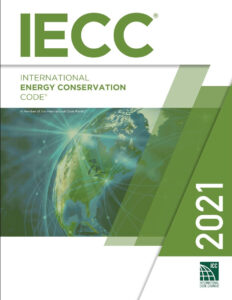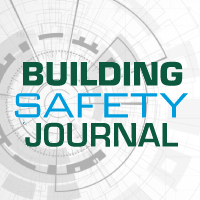
The future has arrived: How the ZERO Code will help build a carbon-neutral future
![]() We are currently undergoing the largest wave of urban growth in human history: by 2060, we will double our current global building stock. Only by eliminating carbon dioxide emissions from new building operations will we begin to reduce building sector emissions overall. To reduce carbon dioxide emissions, architects are looking beyond their own projects to make a greater difference in a new way — with building codes. By creating coalitions and lobbying elected officials to adopt a “zero code” — a nationally vetted framework for designing buildings that create zero net emissions — architects are working with communities to advocate for codes that make existing buildings more energy-efficient, reduce the embodied carbon of building materials and ensure new construction produces zero net emissions.
We are currently undergoing the largest wave of urban growth in human history: by 2060, we will double our current global building stock. Only by eliminating carbon dioxide emissions from new building operations will we begin to reduce building sector emissions overall. To reduce carbon dioxide emissions, architects are looking beyond their own projects to make a greater difference in a new way — with building codes. By creating coalitions and lobbying elected officials to adopt a “zero code” — a nationally vetted framework for designing buildings that create zero net emissions — architects are working with communities to advocate for codes that make existing buildings more energy-efficient, reduce the embodied carbon of building materials and ensure new construction produces zero net emissions.
 Two years ago, Architecture 2030 — a non-profit organization dedicated to rapidly transform the built environment from the major contributor of greenhouse gas emissions to a central part of the solution to the climate and energy crisis — created the ZERO Code, a standard for building design and construction that combines efficiency standards with renewable energy to create zero net carbon buildings. Last year, Architecture 2030 worked with the American Institute of Architects to get the ZERO Code adopted as a voluntary appendix in the 2021 International Energy Conservation Code (IECC), resulting in a set of nationally vetted guidelines: the Zero Code Renewable Energy Appendix.
Two years ago, Architecture 2030 — a non-profit organization dedicated to rapidly transform the built environment from the major contributor of greenhouse gas emissions to a central part of the solution to the climate and energy crisis — created the ZERO Code, a standard for building design and construction that combines efficiency standards with renewable energy to create zero net carbon buildings. Last year, Architecture 2030 worked with the American Institute of Architects to get the ZERO Code adopted as a voluntary appendix in the 2021 International Energy Conservation Code (IECC), resulting in a set of nationally vetted guidelines: the Zero Code Renewable Energy Appendix.
The addition of the Zero Code appendix to the 2021 IECC empowers local communities to take action on climate change through building codes. Jurisdictions that adopt the 2021 IECC and the Zero Code appendix can choose for themselves whether to make zero-net-carbon the standard for all their new commercial, institutional, and mid- to high-rise residential buildings to produce or procure enough renewable energy to achieve zero-net-carbon annually, or to combine it with a previous version of the IECC and require new buildings to be zero net carbon. Additionally, the appendix encourages onsite renewable energy systems but also supports off-site renewable energy when onsite generation is not feasible, such as for high-rise buildings with insufficient roof area, or buildings in densely built and shaded areas. The appendix gives jurisdictions the option to adopt a zero-net-carbon standard as their community’s minimum energy code beginning in the fall of 2020.
City, county and state jurisdictions are wanting to meet their carbon commitment but are unsure how to exactly accomplish that. The ZERO Code is a voluntary appendix that can be inserted into their own regional code and modified as needed to reduce building emissions. Architects are creating coalitions of their peers, mobilizing people outside the building community, and urging their elected officials to begin adopting the ZERO Code when their local building regulations are updated, helping to create real change. To get the ZERO Code adopted by local, county, or state governments, building coalitions to advocate for them is essential. Architects can find common ground and create a foundation for influencing municipal or state boards by starting a conversation around the ZERO Code with engineers, home builders, building officials, and commercial developers.
Read the full article — Why we need a ZERO Code now — at Blueprint for Better.





